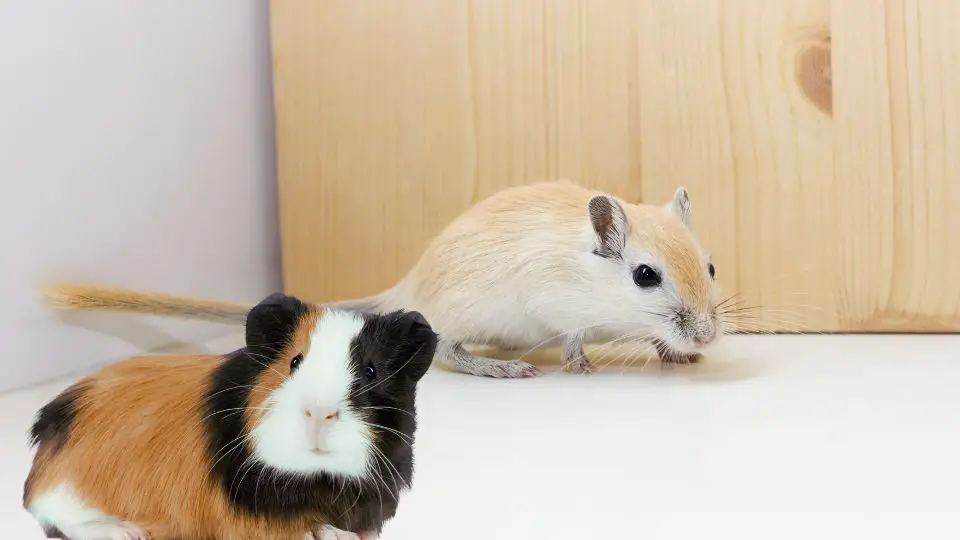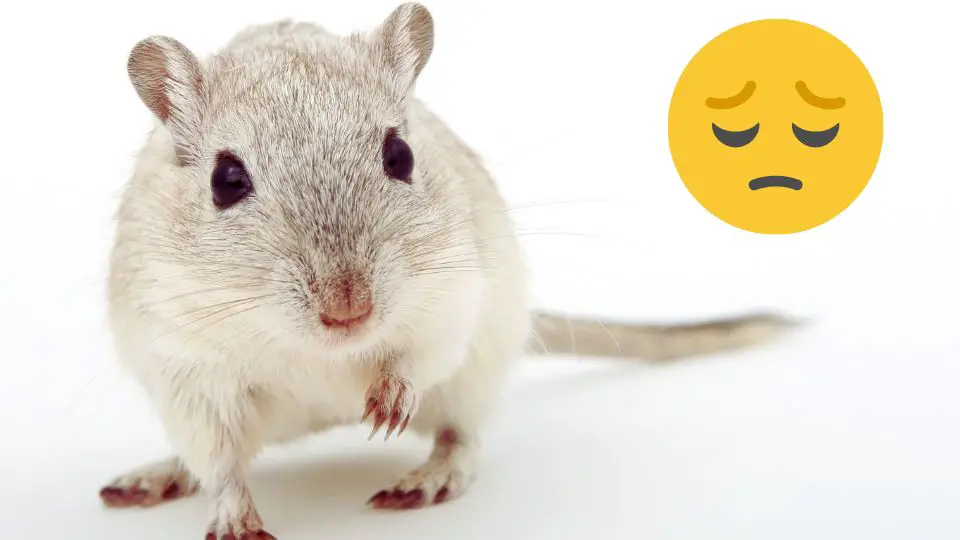Discovering that your gerbil is cold and lethargic can be concerning for any pet owner.
Gerbils, like many small animals, are sensitive to changes in temperature and may experience discomfort or health issues if exposed to cold environments.
In this article, we will explore the signs, potential causes, and immediate actions you can take to help your cold and lethargic gerbil regain warmth and vitality.
Signs of a Cold and Lethargic Gerbil
When your gerbil is experiencing cold temperatures and feeling lethargic, you should recognize the signs and take appropriate action to ensure their well-being. Here are the common signs that indicate your gerbil may be cold.
Shivering or Trembling
One of the noticeable signs of a cold gerbil is shivering or trembling. When the body temperature drops, gerbils instinctively shiver to generate heat and regulate their body temperature. If you observe your gerbil shivering excessively, it may be an indication that they are feeling cold.
Curling up in a Ball
When gerbils are cold, they often curl up into a ball to conserve heat. This behavior helps to minimize the surface area exposed to the cold environment. If you notice your gerbil consistently curling up tightly, it could be a sign that they are trying to keep warm.
Decreased Activity and Movement
Cold temperatures can make gerbils feel sluggish and lethargic. You may observe a noticeable decrease in their usual activity level and movement. They may appear less interested in exploring their environment, interacting with toys, or engaging in their typical behaviors.
Loss of Appetite
Cold temperatures can also affect a gerbil’s appetite. When they are feeling cold and lethargic, they may have a reduced desire to eat. You may notice a decline in their food consumption and a lack of interest in their usual treats or fresh vegetables.
Potential Causes
Here are the common reasons why a gerbil may become cold and lethargic.
Inadequate Environmental Temperature
Gerbils are sensitive to temperature changes and require a warm and comfortable environment to thrive. If the ambient temperature in their habitat is too low, it can make them feel cold and lethargic. Ensure that the gerbil’s enclosure is kept in a suitable temperature range to provide them with the warmth they need.
Exposure to Drafts or Cold Air
Exposure to drafts or cold air can significantly impact a gerbil’s body temperature. Drafts can cause a sudden drop in temperature, leading to discomfort and potential health issues. It’s crucial to place the gerbil’s enclosure in an area free from drafts and away from windows or doors that may allow cold air to enter.
Illness or Underlying Health Condition
A cold and lethargic gerbil may be a sign of an underlying illness or health condition. Respiratory infections, metabolic disorders, or other health issues can cause a decrease in body temperature and energy levels. If your gerbil’s symptoms persist or worsen, seek veterinary care to identify and address any potential health concerns.
Immediate Actions
By taking these immediate actions and providing a warm and supportive environment, you can help your gerbil regain their warmth and energy. Remember to always prioritize your gerbil’s well-being and consult with a veterinarian if needed.
Provide a warm and cozy environment
Ensure that your gerbil’s enclosure is in a warm area of your home, away from drafts or cold air. Create a comfortable space by adding extra bedding or nesting material to help retain warmth.
Adjust the ambient temperature
Increase the ambient temperature in the room where your gerbil is housed. You can do this by using a space heater, adjusting the thermostat, or closing windows and doors to trap in warmth.
Offer warm bedding or a heat source
Place a warm blanket or cloth in your gerbil’s enclosure, allowing them to snuggle and warm up against it. Alternatively, you can use a safe and low-temperature heat source, such as a heat pad or a heat lamp positioned at a safe distance from your gerbil’s habitat.
Encourage gentle and gradual movement
Gently stimulate your gerbil by providing opportunities for mild exercise. Offer some enticing treats or encourage them to explore a small play area within their enclosure. Be patient and allow them to move at their own pace.
Preventive Measures
Preventive measures play a crucial role in ensuring the health and well-being of your gerbil. By taking proactive steps, you can create a safe and comfortable environment that promotes their overall welfare. Here are some preventive measures to consider:
Maintain an appropriate temperature
Gerbils are sensitive to temperature fluctuations and thrive in a specific temperature range. You should provide a habitat that maintains a suitable temperature for their well-being. The ideal temperature range for gerbils is between 65°F and 75°F (18°C and 24°C). Use a reliable thermometer to monitor the temperature in their enclosure and make necessary adjustments to maintain a consistent and comfortable environment.
Avoid exposure to extreme cold or drafts
Gerbils are susceptible to the adverse effects of extreme cold and drafts. Ensure that your gerbil’s habitat is placed in an area free from direct exposure to cold air or drafts. Avoid placing their enclosure near windows, doors, or air conditioning vents, as these areas can expose them to chilly drafts. Creating a draft-free space will help prevent the risk of your gerbil becoming cold and uncomfortable.
Regularly monitor the gerbil’s behavior and health
Closely observe your gerbil for any changes in behavior or signs of illness. Regular monitoring allows you to identify any potential health issues early on and take prompt action. Pay attention to their activity levels, appetite, and appearance. If you notice any unusual behavior, lethargy, changes in eating habits, or other concerning symptoms, consult a veterinarian experienced in small animal care. Regular check-ups and proactive monitoring will help ensure that any health issues are addressed promptly.
Conclusion
In conclusion, recognizing the signs of a cold and lethargic gerbil is crucial for their well-being. Taking immediate actions to provide warmth and comfort, such as creating a cozy environment and adjusting the temperature, can help alleviate their discomfort and promote recovery. However, remember that preventive measures are equally important.
By maintaining an appropriate temperature, avoiding drafts, and regularly monitoring your gerbil’s behavior and health, you can minimize the risk of them becoming cold and lethargic in the first place. Always consult a veterinarian experienced in small animal care for any concerns or if your gerbil’s condition does not improve.
With your attentive care and a warm, comfortable environment, your gerbil will soon regain their energy and return to their lively and playful self.







